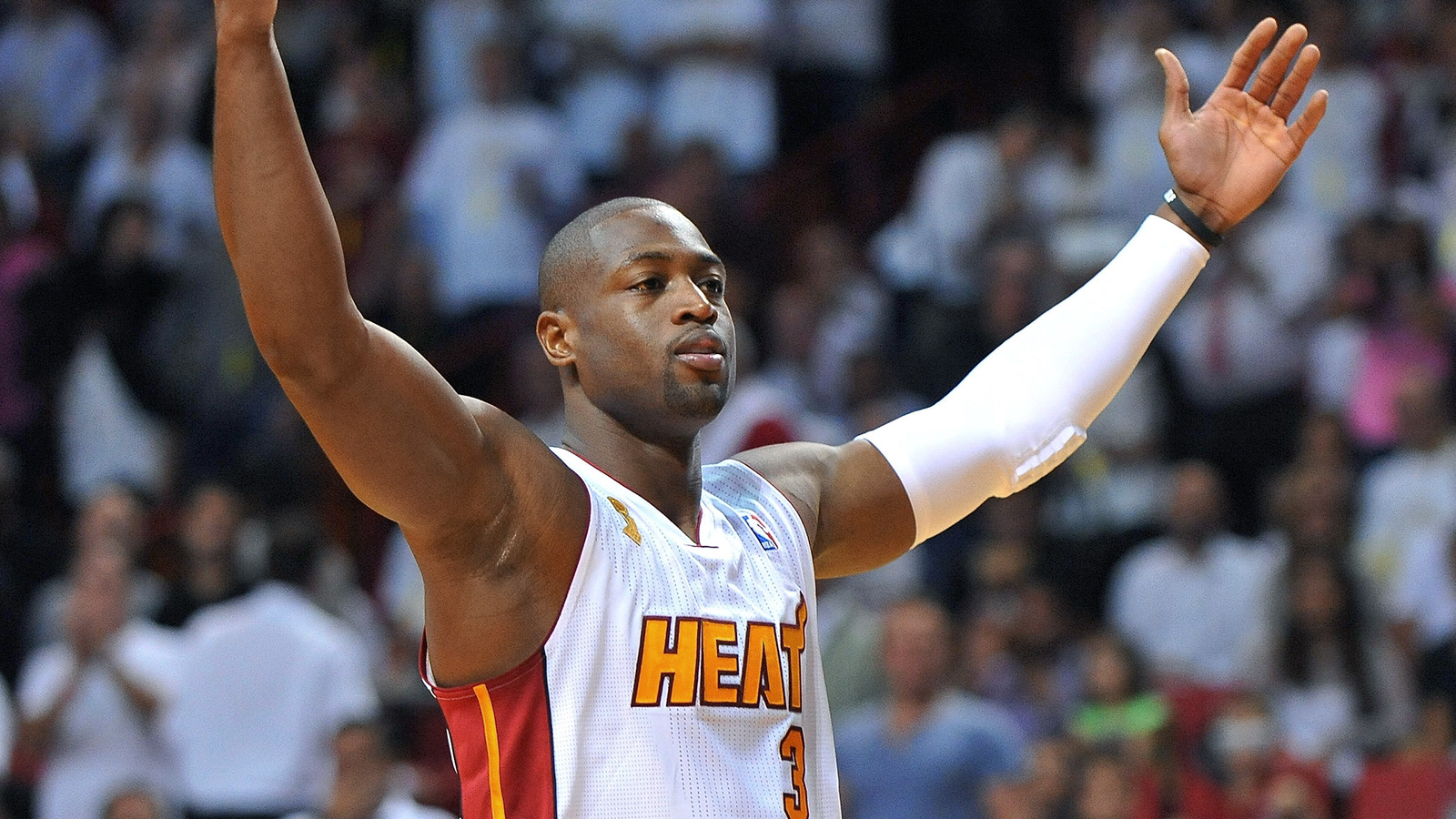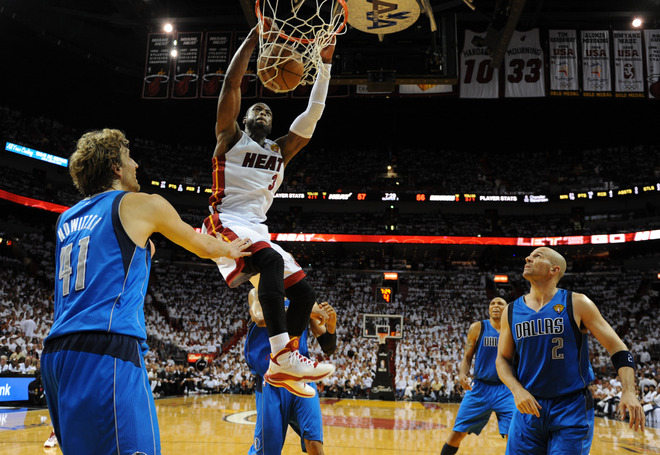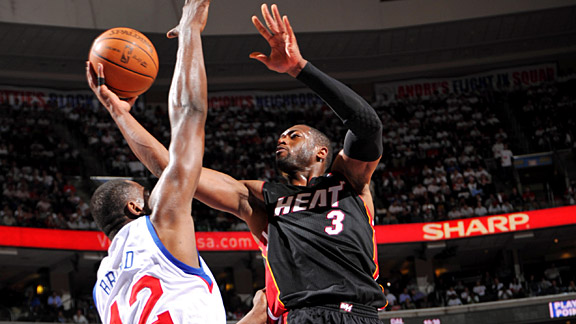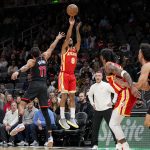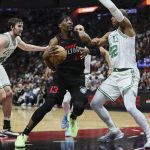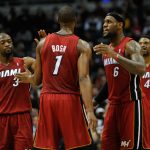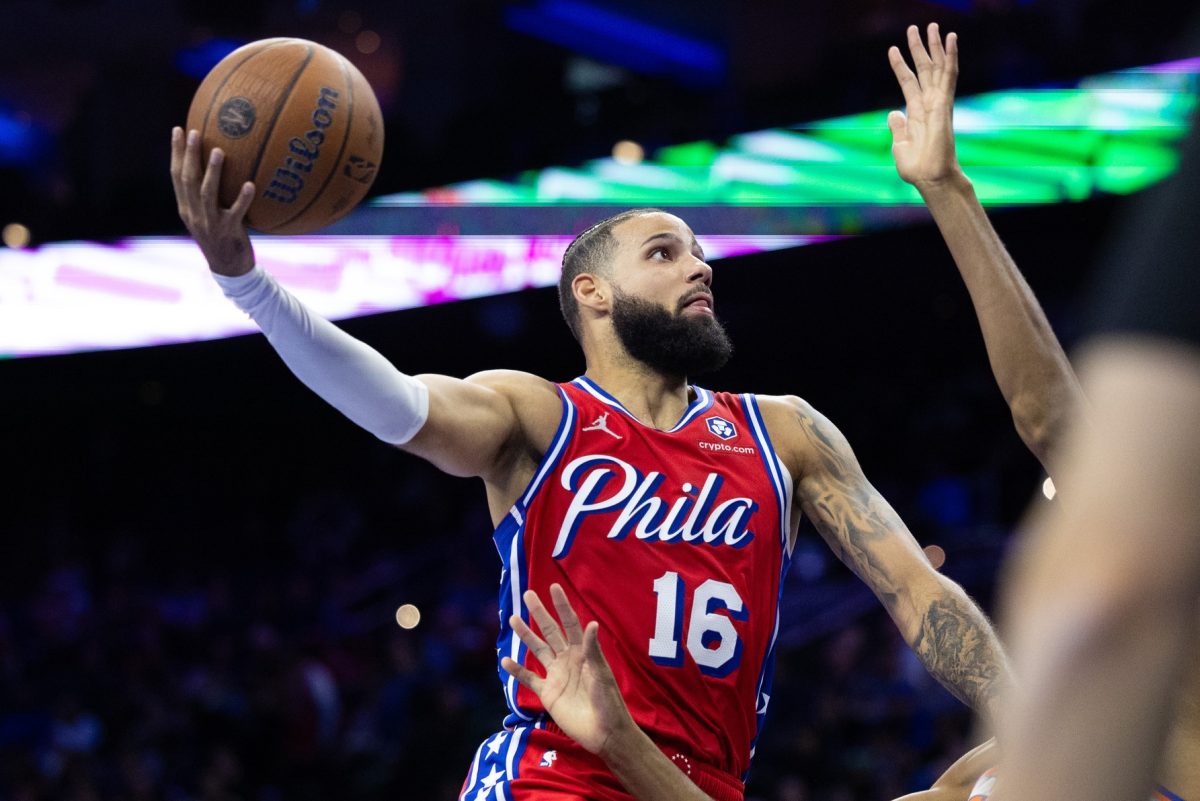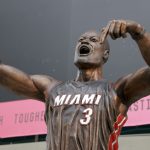Six years ago, Miami “HeatLifer” Dwyane Wade was preparing to begin a season in which he finished statistically better than LeBron James. The fifth overall pick of the 2003 NBA Draft, then in his sixth NBA season, led the league in scoring at 30.2 points per game, nearly two full points per game better than James, who was the top pick in that same draft. He possessed a gracefully sneaky way to get to the rim, developing a unique arsenal of skills no one could contain. Compared to LeBron – a 6-foot-8 small forward – Wade shot a higher percentage from the field, went to the charity stripe more often, and averaged more time on the hardwood per game. Additionally, Wade only missed three games during that season.
The following year, Wade played in one game more than James and collected 17 more steals (142 to 125). James (29.7 ppg) and Wade (26.6 ppg) ranked second and fifth in scoring in the league, respectively.
Then came the summer of 2010, when two of the consensus top-5 players in the league decided to join forces: LeBron bringing his talents, and Wade keeping his, in “South Beach,” or 601 Biscayne Boulevard to be precise. Their first year together, Wade moved up one spot to fourth in scoring (25.5 ppg), while James remained second (26.7 ppg) to first place small forward Kevin Durant. For the first time in his career, Wade made half of his shots. Wade continued getting to the line at will, averaging 8.6 free throws a game, behind only center Dwight Howard (11.7) and Durant (8.7).
That year, Miami’s first of four consecutive trips to the NBA Finals, Wade’s excellent performance in the finals had nearly been forgotten, overshadowed by what can only be described as a mental roadblock suffered by the now 2-time NBA champion James. In that six-game series loss to the Dallas Mavericks, Wade was the aggressor. He went to the line 29 more times, grabbed nine more offensive rebounds, blocked six more shots, and scored 52 more points than the now 4-time MVP. Had the Heat won that series, Wade’s performance would have been worthy of his second Finals MVP Trophy.
That was the last time Dwyane’s play honestly rivaled LeBron’s, the man he welcomed to Miami and allowed to take over the franchise he had lifted to its first NBA Championship. It was also the last time health wasn’t a limiting factor in the explosiveness, athleticism and aggressiveness that helped Wade become a 10-time NBA All-Star, eight-time All-NBA Team Member, and three-time member of the NBA All-Defensive Second Team, living up to the nickname “Flash” given to him by former teammate, and future NBA Hall of Fame center, Shaquille O’Neal.
The 2011-2012 regular season found Wade missing 33 games due to a variety of ailments, ranging from a sprained right ankle, to a bruised left foot, to a bone bruise in his right knee that required offseason surgery. There was a noticeable decline for Wade in minutes played – almost four fewer per game than the season before and a career low. Wade’s shot attempts were his fewest since his sophomore campaign and his free throw attempts marked his lowest average since his first season in the league. Those two factors combined to result in a scoring average of 22.1 ppg that also set a personal low since his inaugural NBA season. It didn’t matter, however, because the Heat claimed their second championship (their first with James) by defeating the Oklahoma City Thunder in the NBA Finals. That year LeBron collected his third league MVP Award.
A 27-game winning streak, the second longest in NBA history, highlighted a 2012-2013 regular season in which James took home his fourth league MVP. A more noteworthy number for Wade that season is 20, marking how many more games he played than in the previous campaign. Even though Wade re-injured his knee, and a more prudent approach would have been to give his body, and his legs in particular, some time off, Wade continued playing. His shooting percentage skyrocketed to a career-high 52.1 percent and his trips to the free throw line remained virtually identical to the prior season, but his scoring dipped for the second season in a row.
In the playoffs, Wade had his left knee drained before game 7 of the NBA Finals, the second postseason in a row such painful measures were necessary. Still, Wade’s 23 points and 10 rebounds in the final game proved crucial as Miami won their second ring in a row, making Wade a three-time champion.
Last season, Wade sat out 28 games as part of a maintenance plan to keep him healthy for the postseason, playing in only three back-to-back contests. In those games, he averaged 13.3 points in 30.4 minutes of action. While he started all 20 playoff games, Wade scored more than 20 points only six times. His statistics were down across the board – assists, rebounds, shooting percentage, and trips to the line. It seemed clear that playing every game for an almost two month stretch, something Wade was not required to do during the regular season, was taking a physical toll on the 11-year veteran. During Miami’s losing series to the San Antonio Spurs in the NBA Finals, Wade scored 15.2 points a night. The same talented player who set the NBA record for blocking 106 shots in a single season – no player his height or shorter had ever previously recorded 100 blocks in a season – failed to swat a single shot in the five game series.
James was now, once again, faced with a decision. After opting out of the final two years of his original six-year Heat contract, James made a choice that altered the balance of power in the NBA. On July 11, LeBron informed the world that he would be going back home to Northeast Ohio to play for his former team, the Cleveland Cavaliers.
LeBron logged about 1,200 more minutes than Wade last season. There were rumblings that that didn’t sit well with James. When they teamed up four years earlier, the idea was to lift the burden of carrying a team off both of their shoulders. Clearly this was not the case for James last year. As ESPN NBA Writer Brian Windhorst put it, “James does not lack perspective…Wade’s health is once again in question after he showed signs of slowing down in the late rounds of the playoffs. Wade has needed procedures on his knees in each of the past two summers and it has carried over into the season, reducing his availability.”
It would appear a driving factor in LeBron’s decision to leave Miami was a belief Wade would not return to the dominant force he was for so long. While holding no PhD, James is known as an NBA historian and as having a basketball IQ that is second to none. Furthermore, James doesn’t leave anything to chance. Together with his tight-knit family and his group of friends and advisors, there always seems to be a plan in the works. Consider the fact that LeBron positioned his current contract, with an opt-out after this season, to end in 2016, when an expected increase in TV revenue is projected to exponentially raise player salaries, or the fact that LeBron’s 2014 decision was released in a well-crafted and carefully thought out SI piece.
That’s not to say James can predict the future. However, it can be argued that James felt his window for winning titles had closed in Miami.
In an hour of despair for Heat fans, Miami lost the best player in the league and was in danger of All-Star power forward Chris Bosh bolting to the Houston Rockets. At the 11th hour, the hometown team offered Bosh a max-contract that was too good to refuse: $118-million over five years. That was one year and $30 million more than the current Collective Bargaining Agreement would allow any other franchise to offer him.
While James possibly counted Wade out, there was one man whose confidence never wavered. It was the architect credited with assembling Miami’s 2012 and 2013 championship rosters, the same person who coached Wade the first time Miami raised the championship banner in 2006.
“There’s a possibility Dwyane can turn back into who he was before he ceded a good part of his game to LeBron,” Riley said in a July 30th interview.
Let those words marinate for a few seconds.
CAN Wade return to the player he was prior to the LeBron-era in Miami?
CAN he once again become one of the top scorers in the NBA, capable of creating a shot for himself or his teammates at will?
CAN he carry the Heat, game after game, for an entire season?
“I can’t go back five years,” Wade told Barry Jackson of the Miami Herald in response to Riley’s optimism.
“I ain’t trying to go back five years,” Wade said. “If we all could, we would, but that’s not likely … I’m used to something from the last four years. Until we get into training camp and the preseason games, you really don’t know how it’s going to be yet.”
Wade was acknowledging one of the crueler truths about the NBA ecosystem. The type of game Wade has featured during his career does not age gracefully. The high-flying acrobatics and ugly spills – ones that helped make him a superstar and led to SportsCenter highlights, as well as Gatorade commercials about falling down and getting back up – were just too unforgiving on his body.
As an example of how Wade’s game has been changing: Wade averaged 4.8 free throws a game last season, which ranked tied for 30th in the league. Four times in his career he has attempted at least twice as many free throws, including a seven-year stretch (2004-2011) in which he ranked no lower than sixth in the league in attempts per game.
Wade is no longer capable of carrying a team for an 82-game stretch like he had to back in 2009-2010, the year before LeBron joined the Heat. In that season, despite Wade enjoying one of the best years of his career, the Heat were unable to advance past the first round of the playoffs. Of course starting for the Heat that year, along with Wade, were small forward Michael Beasley, center Jermaine O’Neal and center Joel Anthony. The 2014-2015 version of the Miami Heat is a clear upgrade in talent from that team, meaning less will and energy should be demanded from Wade. That’s not to say he is resting on his laurels, though. In fact he welcomes the challenge.
One thing Wade has worked on this offseason is getting his body in optimum shape. That included losing weight by training hard and eating properly. Wade even called it “one of [the] hardest things [he’s] ever done.”
The idea is that this plan will help him make it through an entire season by, among other things, putting less stress on his overstressed knees. During the past three seasons Wade missed 74 games, eight games less than an entire season. A successful 2014-2015 campaign for Wade shouldn’t be judged on whether he ranks among the leagues best at putting the ball in the basket. Nor should it be based on Wade being able to carry Miami for long stretches. At 32 years old, and without much cartilage remaining in his knees, those would be unrealistic expectations.
Next season, Wade can sit out the occasional game, however it is difficult to imagine the Heat having a successful season if he can’t play in the neighborhood of 70 games and do so at a high level. To further aid Wade, it makes sense to limit his play to about 30 minutes a game. This Heat team should be deep enough to be competitive with Wade resting an average of nine minutes each half. That would save Wade’s body approximately 245 minutes of playing time over the course of the season.
Although Riley tries to keep hope alive that a return of “Flash” might be a possibility, Heat fans should appreciate whatever flashes of brilliance Wade can show.
